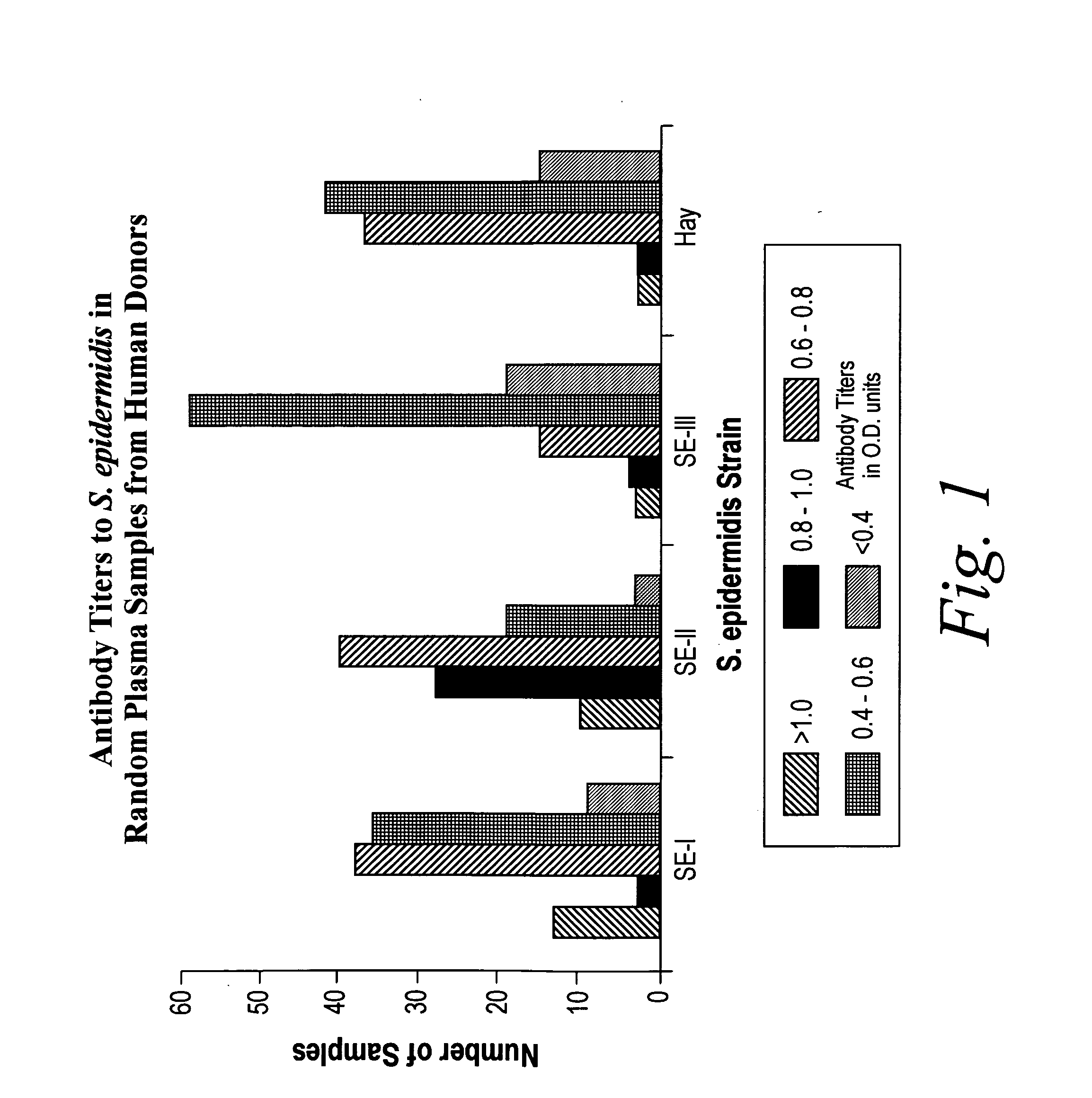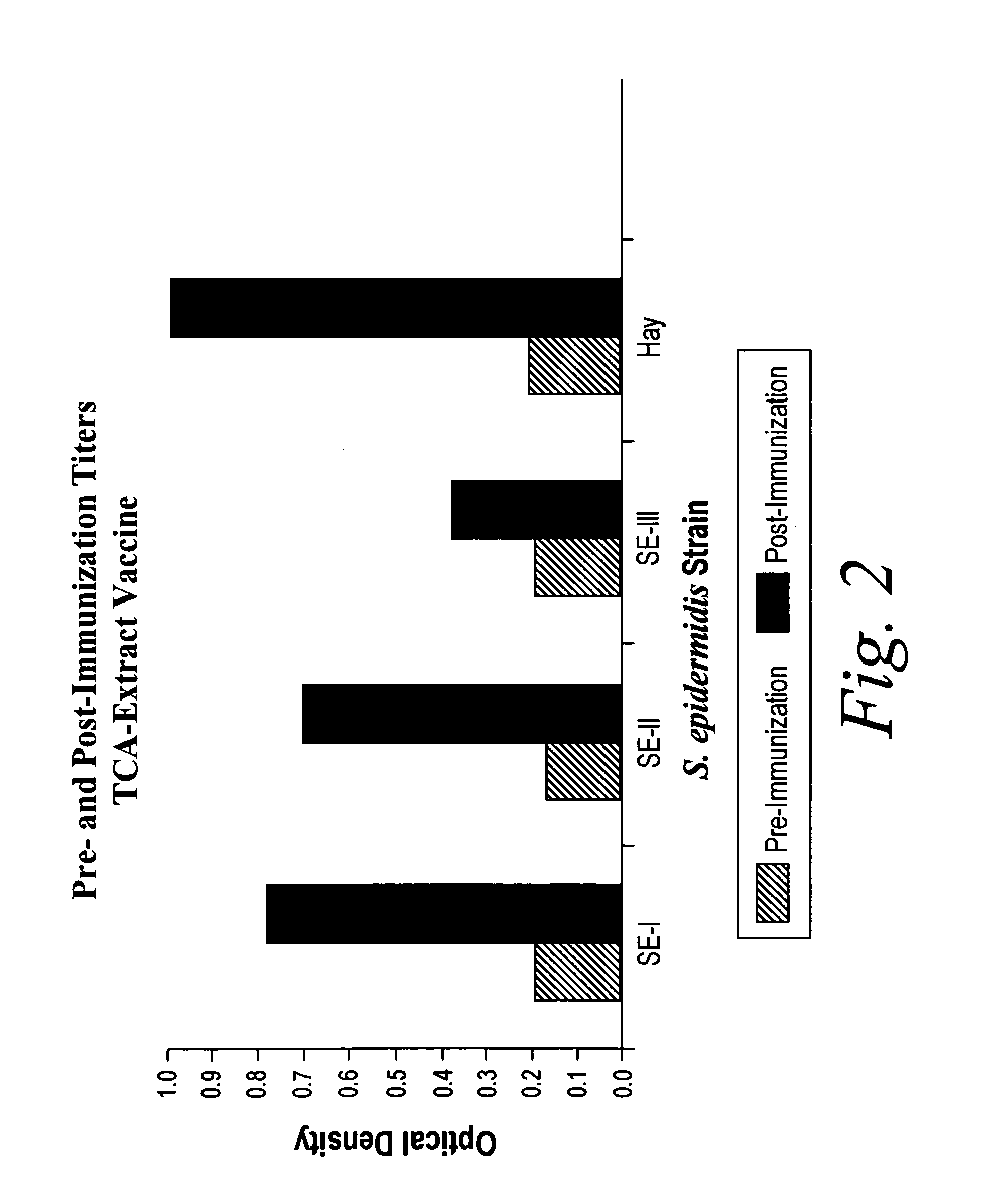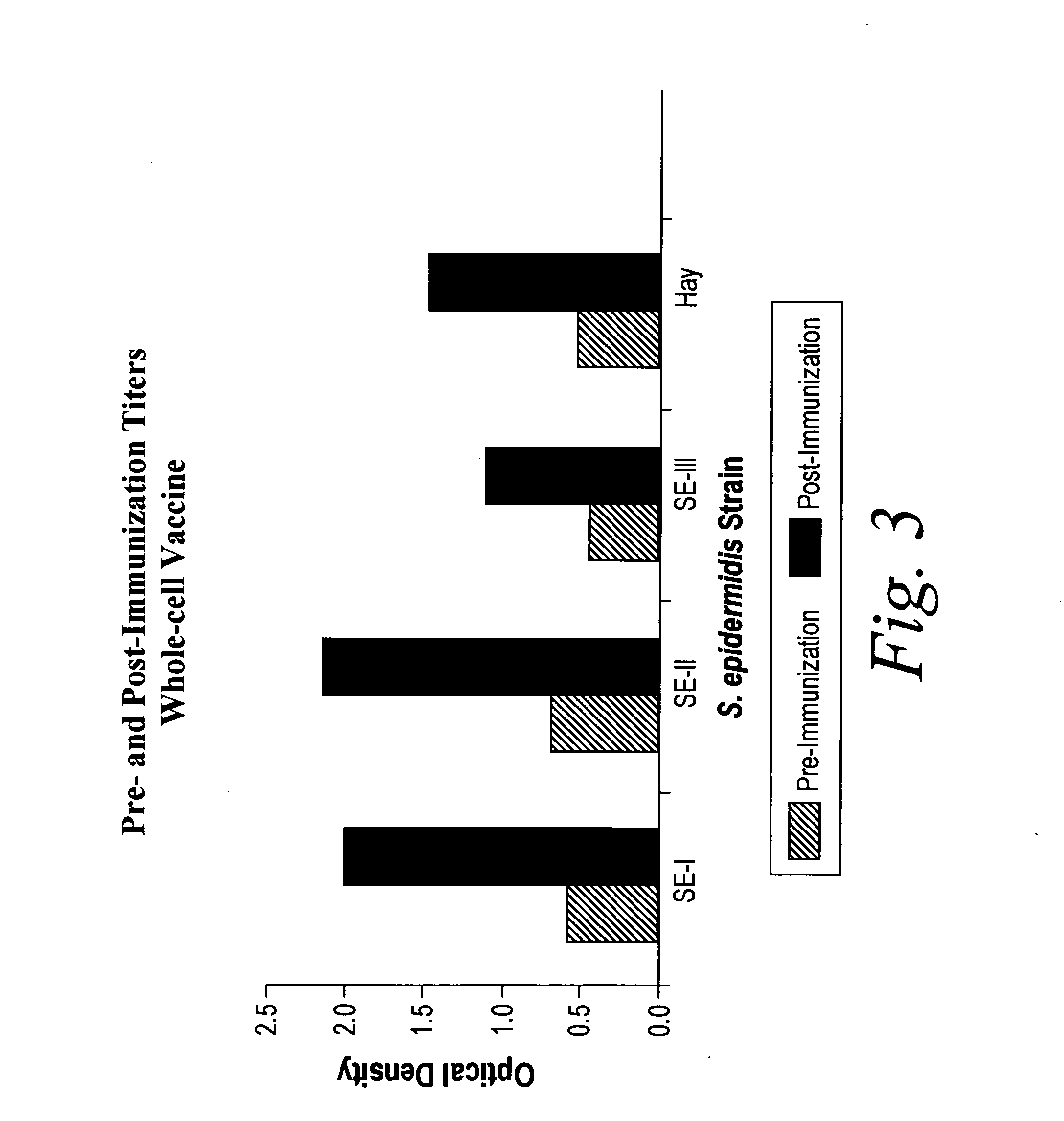Isolated Broadly Reactive Opsonic Immunoglobulin for Treating a Pathogenic Coagulase-Negative Staphylococcus Infection
a technology of coagulase-negative staphylococcus and immunoglobulin, which is applied in the field of immunoglobulin, can solve the problems of being at risk for frequent and recurrent infections in treatment, being important causes of human morbidity and mortality, and being at risk for systemic infection in debilitated or immunosuppressed patients
- Summary
- Abstract
- Description
- Claims
- Application Information
AI Technical Summary
Benefits of technology
Problems solved by technology
Method used
Image
Examples
example 1
[0101]The purpose of this example is to demonstrate that large immunoglobulin pools can not ensure the presence of a high titer of antibody to S. epidermidis.
[0102]IgG fractions of standard intravenous immunoglobulin (IVIG) were used in experiments to represent large immunoglobulin pools. Preparations of various pools of IgG from several companies were analyzed for comparison (Gamimmune, Cutter Labs., Inc., Berkeley, Calif.: Sandoglobuin, Sandoz, East Hanover, N.J.; Gammagard, Hyland, Los Angeles, Calif.; Polygam, American Red Cross, Washington, D.C.).
[0103]Samples from each of these pools, and one sample from an individual patient (SAM), were tested for binding in an enzyme-linked immunosorbent assay (ELISA) against a preparation of S. epidermidis. Although any S. epidermidis strain can be used, the experiments used Hay, a clinical strain isolated from the blood of a child with S. epidermidis sepsis. This strain is on deposit at the American Type Culture Collection (ATCC) under Ac...
example 2
[0108]In a second immunoglobulin binding study, random samples of plasma from almost one hundred human patients were screened in an ELISA. Antibody titers to four different strains of S. epidermidis were determined. One strain was obtained from the American Type Culture Collection, Rockville, Md. (ATCC 31423; Serotype 1). Two others, Serotypes 2 and 3, were provided by Dr. Y. Ichiman of the St. Marianna University School of Medicine, Japan, described in Y. Ichiman, J. Appl. Bacteriol., 56:311 (1984).
[0109]Preparations of each strain were prepared as before. The ELISA was performed as previously described, except that 40 μls of each sample were used. As shown in FIG. 1, a significant number of samples contained antibody to each strain of S. epidermidis, including the clinical strain, Hay (ATCC 55133).
[0110]This data indicates that although there was a great deal of variability in binding, cross-reacting antibodies may be present within a single sample.
example 3
[0111]Pooled immunoglobulin could contain antibodies against a variety of S. epidermidis strains, which would mimic a single broadly reactive antibody. Therefore, studies were performed by immunizing animals with a single S. epidermidis strain to determine if exposure to this single strain would induce broadly reactive antibody.
[0112]Rabbits were immunized with either a heat-killed whole cell or TCA-extracted antigens of S. epidermidis. TCA-extracted antigens of S. epidermidis were prepared as described. One milligram of this preparation was dissolved in 1.0 ml of normal saline, and administered intramuscularly to New Zealand White rabbits. Following a one week rest, a second 1.0 ml dose was given. A final dose given one week later completed the primary immunization series. An identical third (P3), fourth (P4), or fifth (P5) course of immunization can be included, and additional booster series can be used to further elevate specific antibody levels. Further booster immunizations wer...
PUM
| Property | Measurement | Unit |
|---|---|---|
| total volume | aaaaa | aaaaa |
| volume | aaaaa | aaaaa |
| molecular mass | aaaaa | aaaaa |
Abstract
Description
Claims
Application Information
 Login to View More
Login to View More - R&D
- Intellectual Property
- Life Sciences
- Materials
- Tech Scout
- Unparalleled Data Quality
- Higher Quality Content
- 60% Fewer Hallucinations
Browse by: Latest US Patents, China's latest patents, Technical Efficacy Thesaurus, Application Domain, Technology Topic, Popular Technical Reports.
© 2025 PatSnap. All rights reserved.Legal|Privacy policy|Modern Slavery Act Transparency Statement|Sitemap|About US| Contact US: help@patsnap.com



